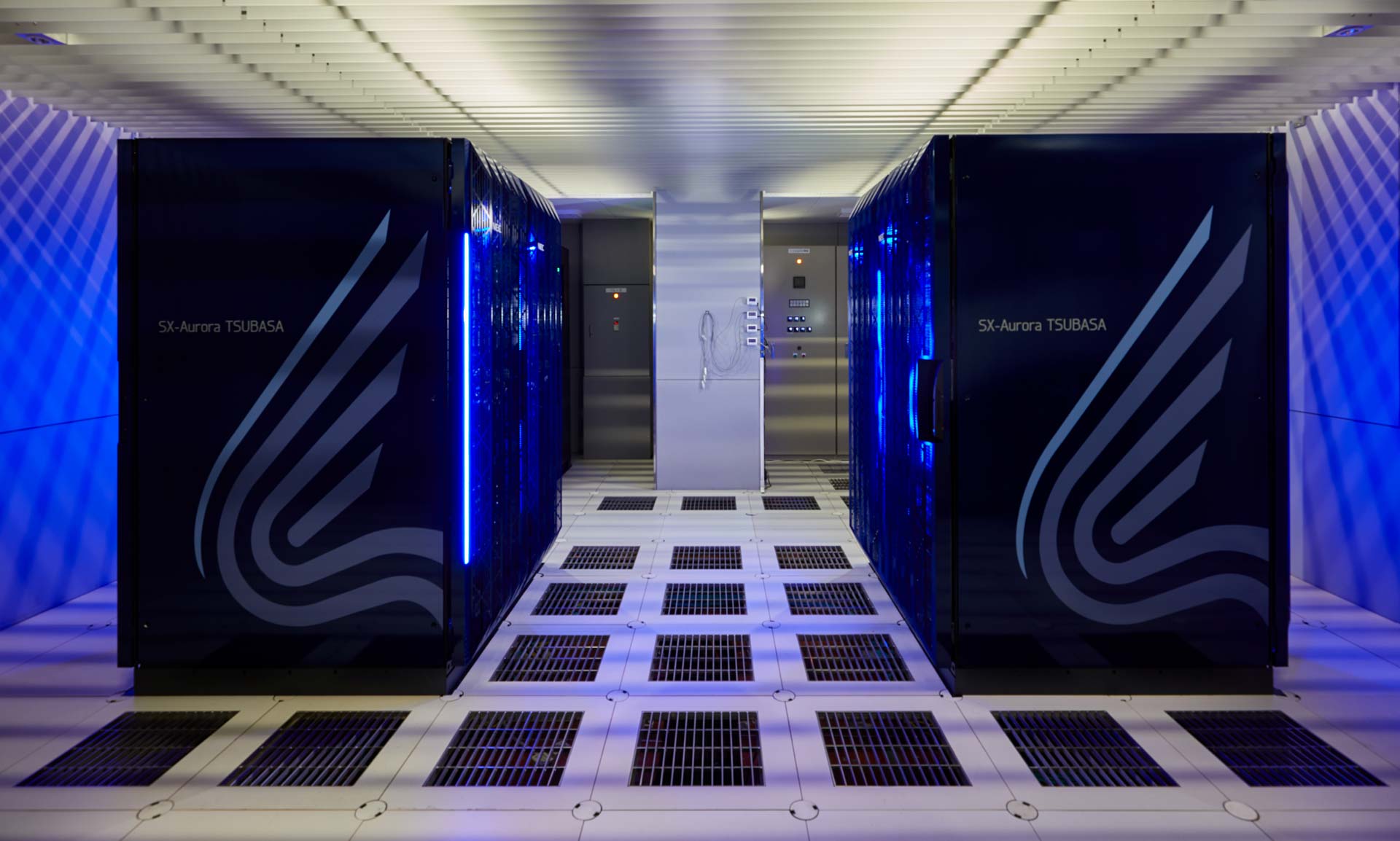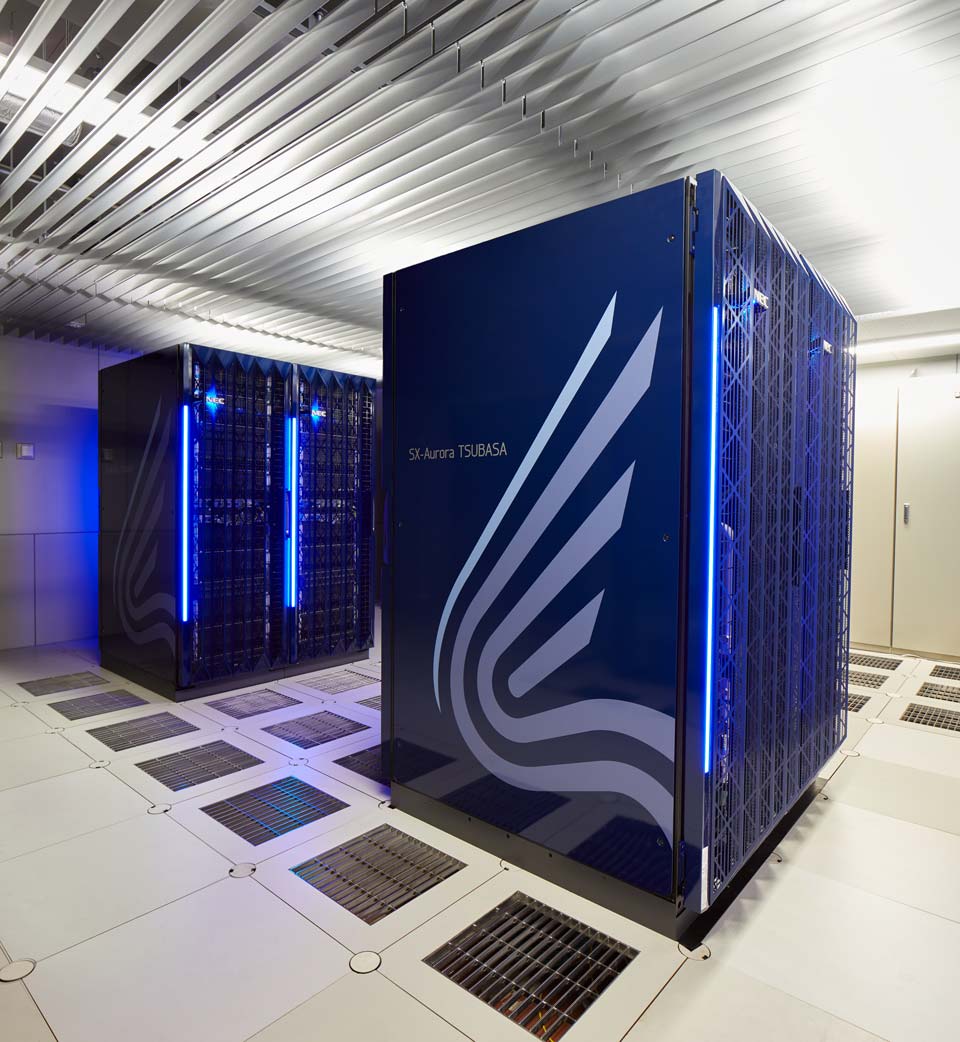Changes in the environment caused by human activities may lead to exceeding the Earth’s resilience capability, resulting in irreversible climatic and environmental changes. To prevent this to happen, it is necessary to make future projections and to take appropriate countermeasures.
The Earth system that surrounds us, including the atmosphere, oceans, and rivers, is based on complex physical, chemical, and biological processes. We need to reproduce a virtual earth environment using computers incorporating the latest knowledge of these various processes, examine climatic and environmental changes, and make detailed temporal and spatial projections.
In order to support research on global environmental model calculations, the Center for Global Environmental Research (CGER) in cooperation with the Environmental Information Department at NIES has established a supercomputer system and offers it to researchers both within and outside NIES.






